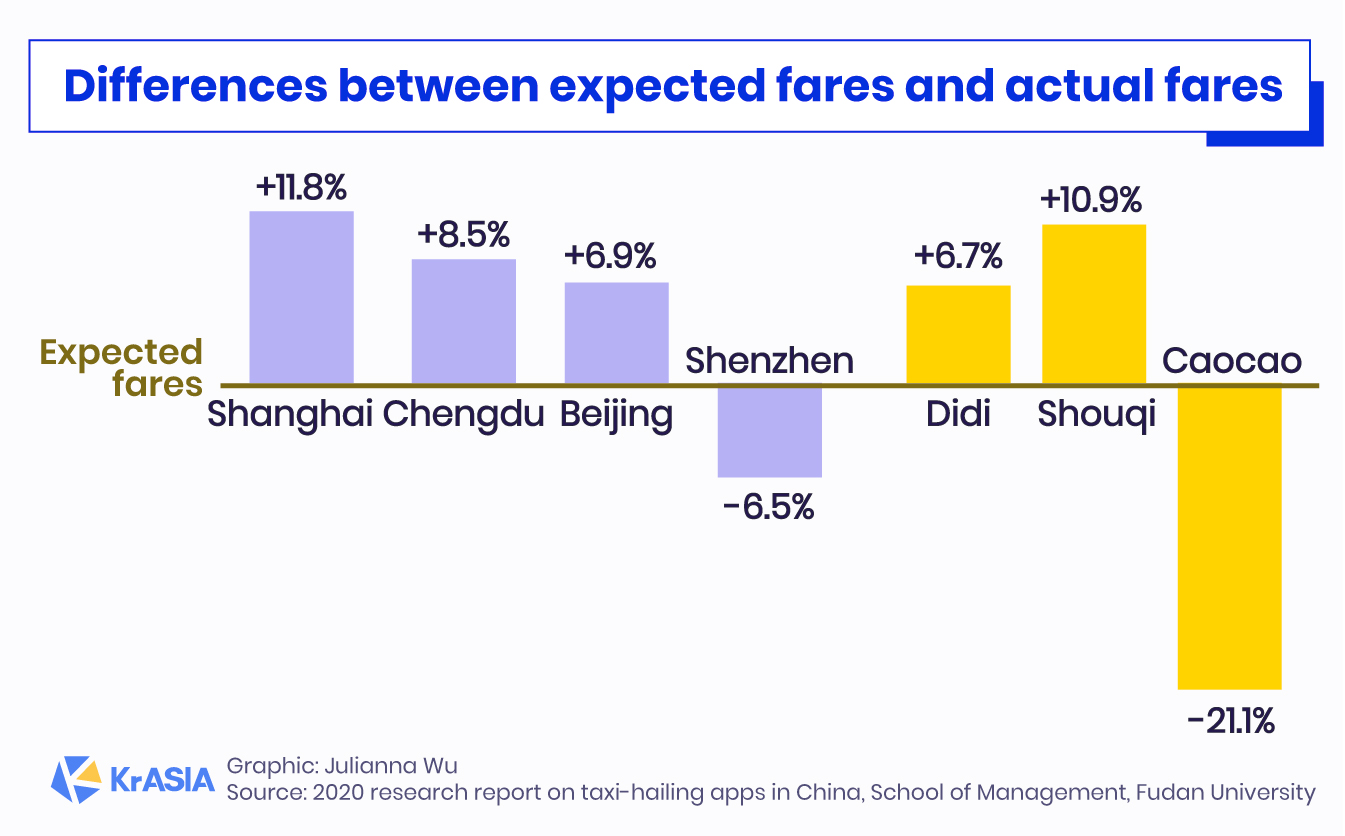Ever since Uber defined ride-hailing, similar platforms all over the world have offered cost-effective ways to commute in urban cities. However, in China, not every platform treats its customers or drivers the same.
Ride-hailing has generated silos of data that no transport provider had access to before. Once sorted and analyzed, this information gives ride companies the opportunity to fine-tune their services, as well as the opportunity to charge sliding fees based on each user’s profile.
In late 2020, researchers at Fudan University conducted a research project where they made more than 800 trips in major cities in China arranged through private ride and taxi apps. The objective was to find out how these platforms have transformed urban mobility.
With the researchers’ permission, KrASIA is reproducing some of their findings.
Prices
On average, Didi Express’ fare per kilometer is the same as taxis, while Shouqi, a car rental and ride-hailing service operator owned by a national vehicle manufacturer enterprise of the same name, charges the most.
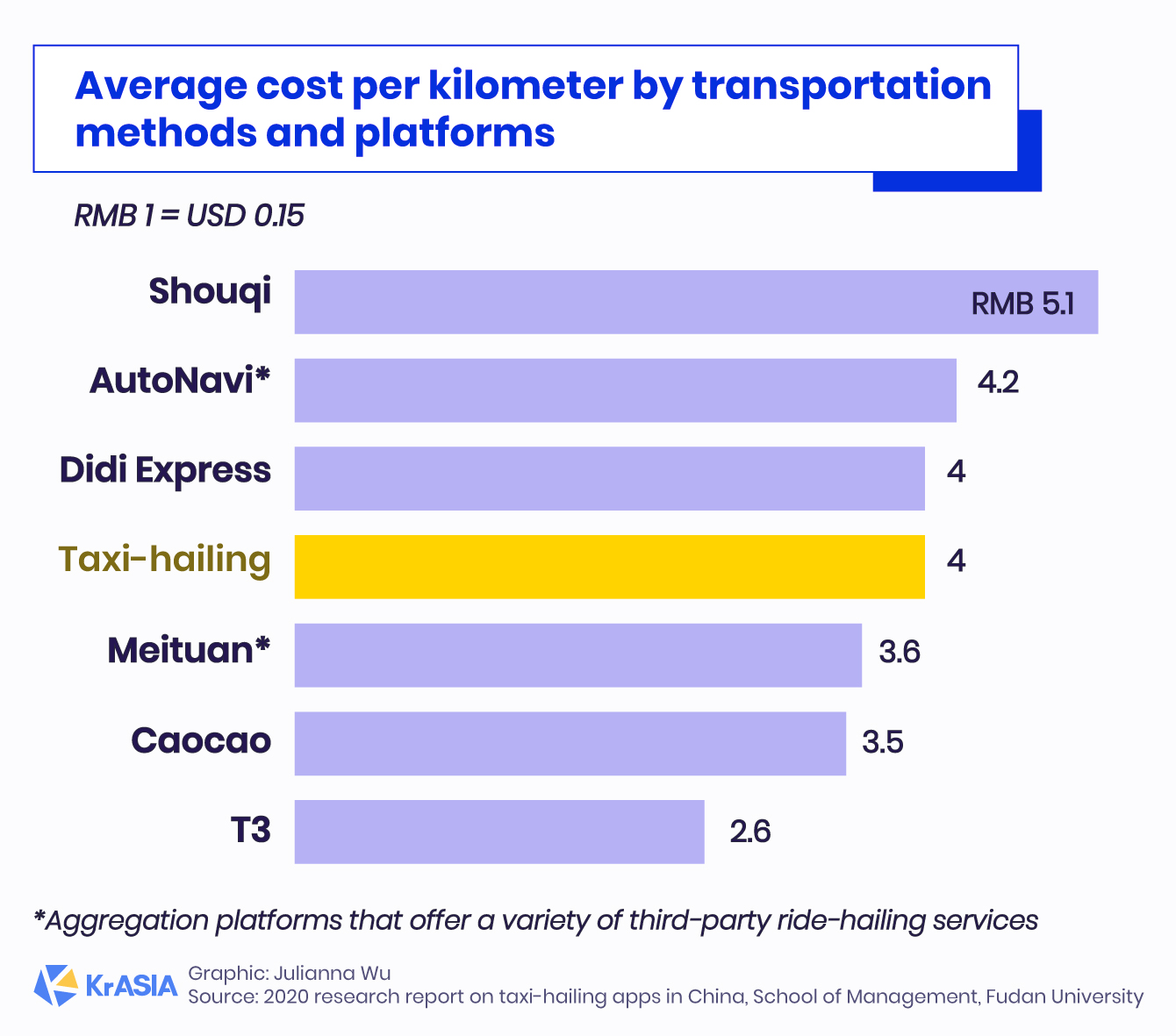
Ride platforms often offer flexibility in service. For instance, Didi Chuxing, the biggest ride provider of its kind in terms of daily order volume, offers economical options like Didi Express alongside first-class ones like Didi Luxe, where you can choose your vehicle’s make and model as well as request a driver who speaks English. You can even indicate how the driver should address you during the ride.

But what if the price is also “personalized” based on how much the company thinks you’re willing to pay? Users of ride platforms have noticed that their fares don’t always align with their expectations, particularly when they follow the same route at the same time.
The researchers from Fudan University also examined personalized pricing, or price discrimination, on these apps. One of their findings is that iPhone users are charged more for trips.
“If a passenger uses an iPhone, they are more likely to receive recommendations for roomier choices. If a passenger does not use an iPhone, the more expensive their phone is, the more likely it is for them to be picked up by a nicer vehicle,” said the report. On average, iPhone users also receive fewer subsidies and discounts on Didi—RMB 2.07 over the course of the rides booked by the researchers, compared to RMB 4.12 for non-iPhone users.
In general, the pre-ride estimated fares were lower than what the platforms actually charged, except in Shenzhen. However, less popular options, like Caocao, charged significantly lower fares.
Wait times
The researchers found that actual wait times tend to be longer than the estimated wait times. “Our data analysis shows that platforms tend to retain passengers by presenting them with shorter wait times than the actual case, encouraging them to be more patient,” said the report.
Didi’s actual wait time on average is 1.3 times longer than estimations. Its delay rate is 20% higher than other platforms. As an aggregation platform that doesn’t provide its own services, AutoNavi lets users hail cars from more than eight companies, which significantly shortens the wait time.
“Platforms may claim that they underestimate wait times due to traffic congestion. However, the data showed that the underestimation of wait times was significant during peak travel times as well as other hours,” said the report.

A user’s location can impact the wait time. During morning rush hours in Beijing, it could take more than 30 minutes to match with a car, and then there is an interval before it arrives. On the other hand, in Chengdu, which is much less congested, the evening’s peak wait time is only 4.1 minutes.
Drivers
The survey’s data from Shenzhen and Beijing indicates that ride platforms can significantly improve the efficiency of vehicles compared to regular taxis’ operations.
With Didi’s rides being the most popular, its vehicles maintain the lowest idle rate at 26.1%, while taxis had the highest idle rate at 36.9%.
In general, ride platforms of every stripe guaranteed higher income for all drivers, said the report.
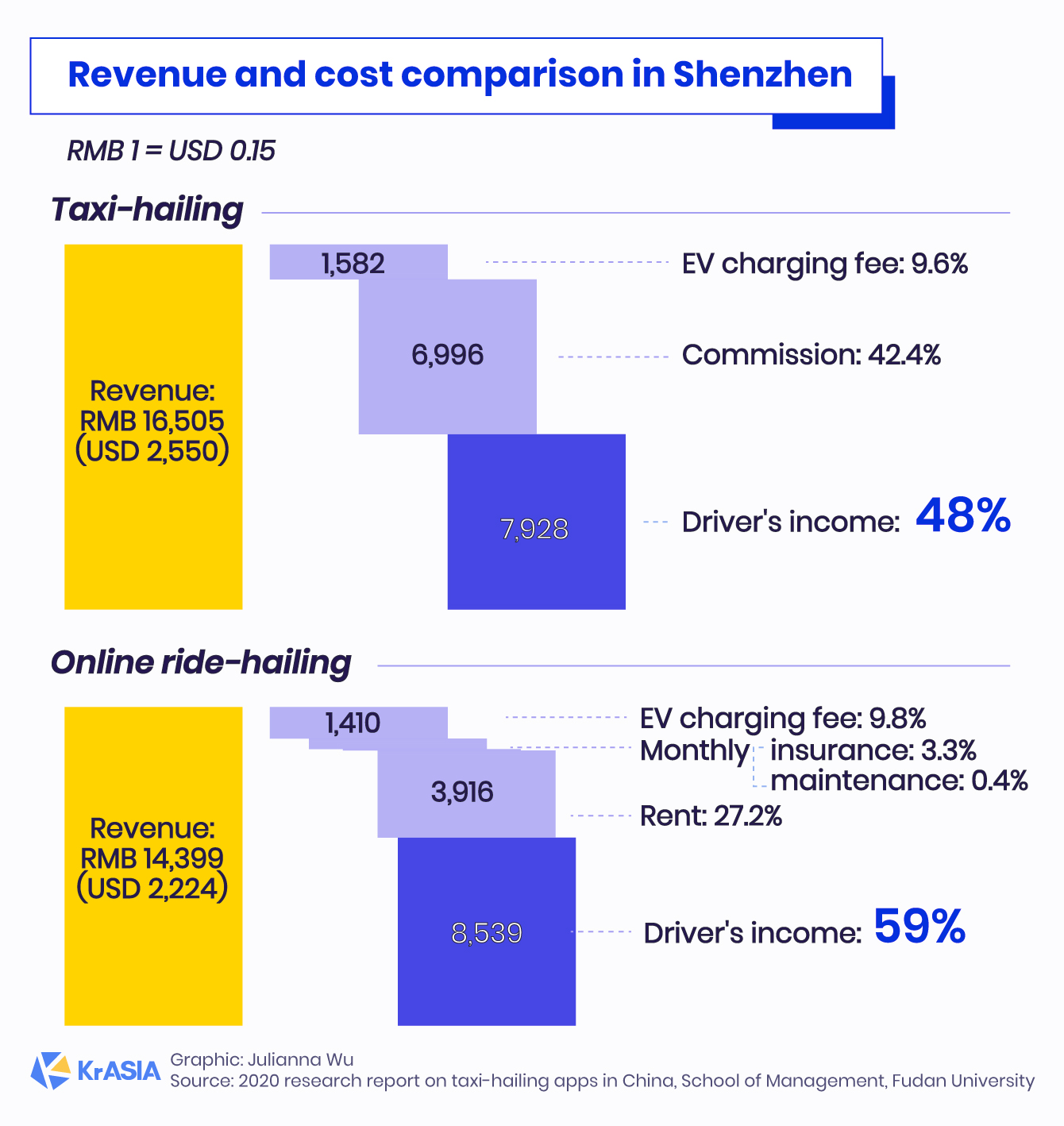
Yet there is a tradeoff. The researchers found that many drivers who utilize ride platforms feel they are “trapped in the system.” They said rewards often seemed unattainable and fines were issued with little afterthought.
“Everyone is doing this for the money, but the algorithms behind the software are strict, and the maximum income of drivers has been capped by the platform,” said a driver surnamed Zhang.
Various penalties may impact a driver’s income in the long run. For instance, if a driver cancels a ride order on Didi, their ranking will be lowered. It could take a week of good performance to recover their score. On Caocao, a driver is fined RMB 10 (USD 1.50) if they do not call their passenger within one minute after receiving an order.
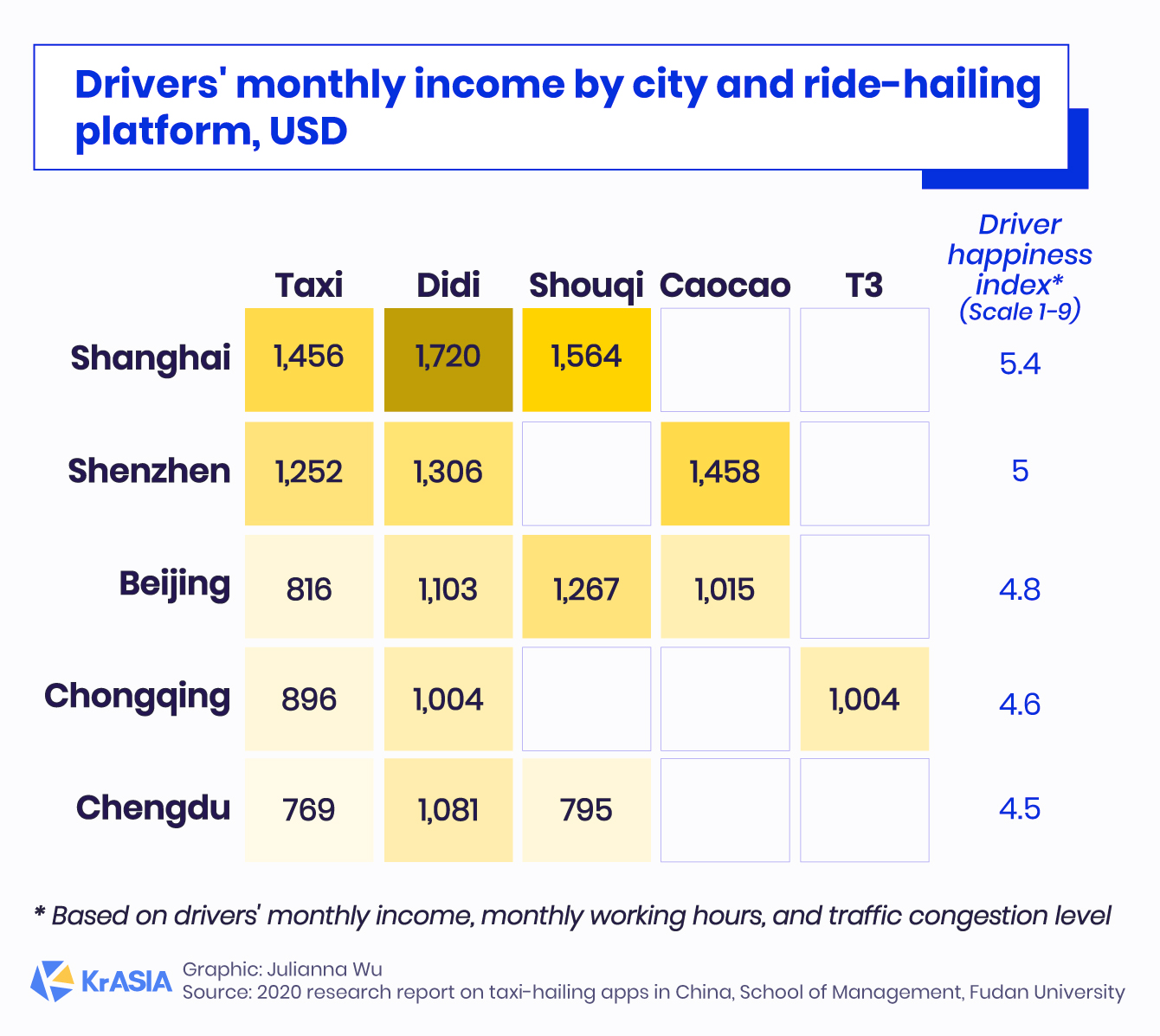
What’s next?
This research was conducted in 2020, and it wasn’t the first time for a research team at Fudan, led by professor Sun Jinyun, to gather data about rides in China.
In 2017, Sun led a similar project in downtown Shanghai and determined that hailing a taxi on the street saved both time and money compared to ride platforms. But the latest data indicates that ride platforms now offer a cheaper option for passengers, while also increasing drivers’ income.
One significant selling point of ride platforms is predictability. Passengers know exactly where their rides are during their wait.
Didi remains the ride platform with the largest market share, while smaller firms list on AutoNavi and Meituan as a counterbalance.
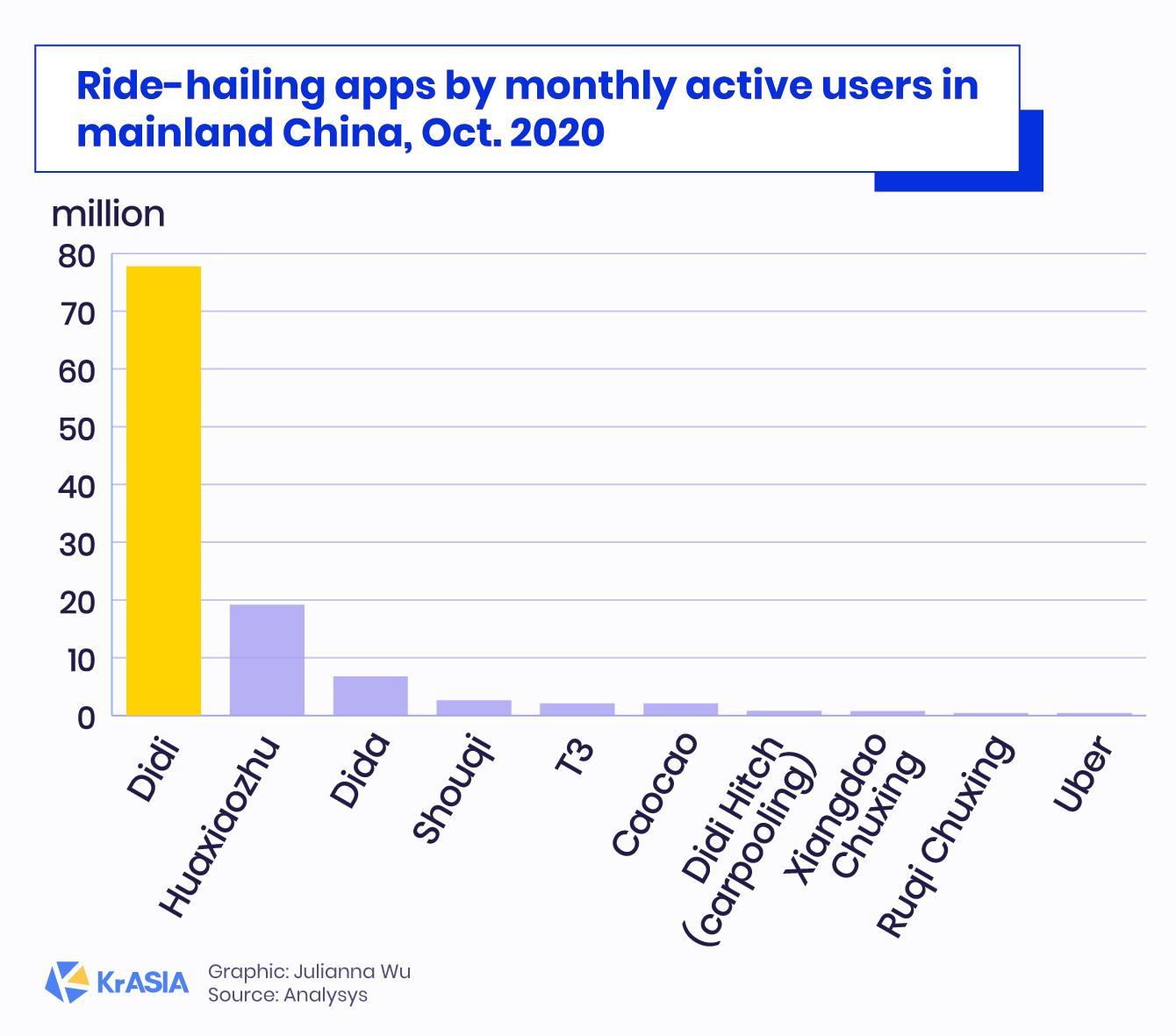
It’s clear that ride-hailing apps have become the first choice for urban mobility in many cities around China, and this may further reshape transportation services in the near future. “Traditional taxis will be abandoned if they cannot access online car-hailing software,” Sun said in the report’s summary.

